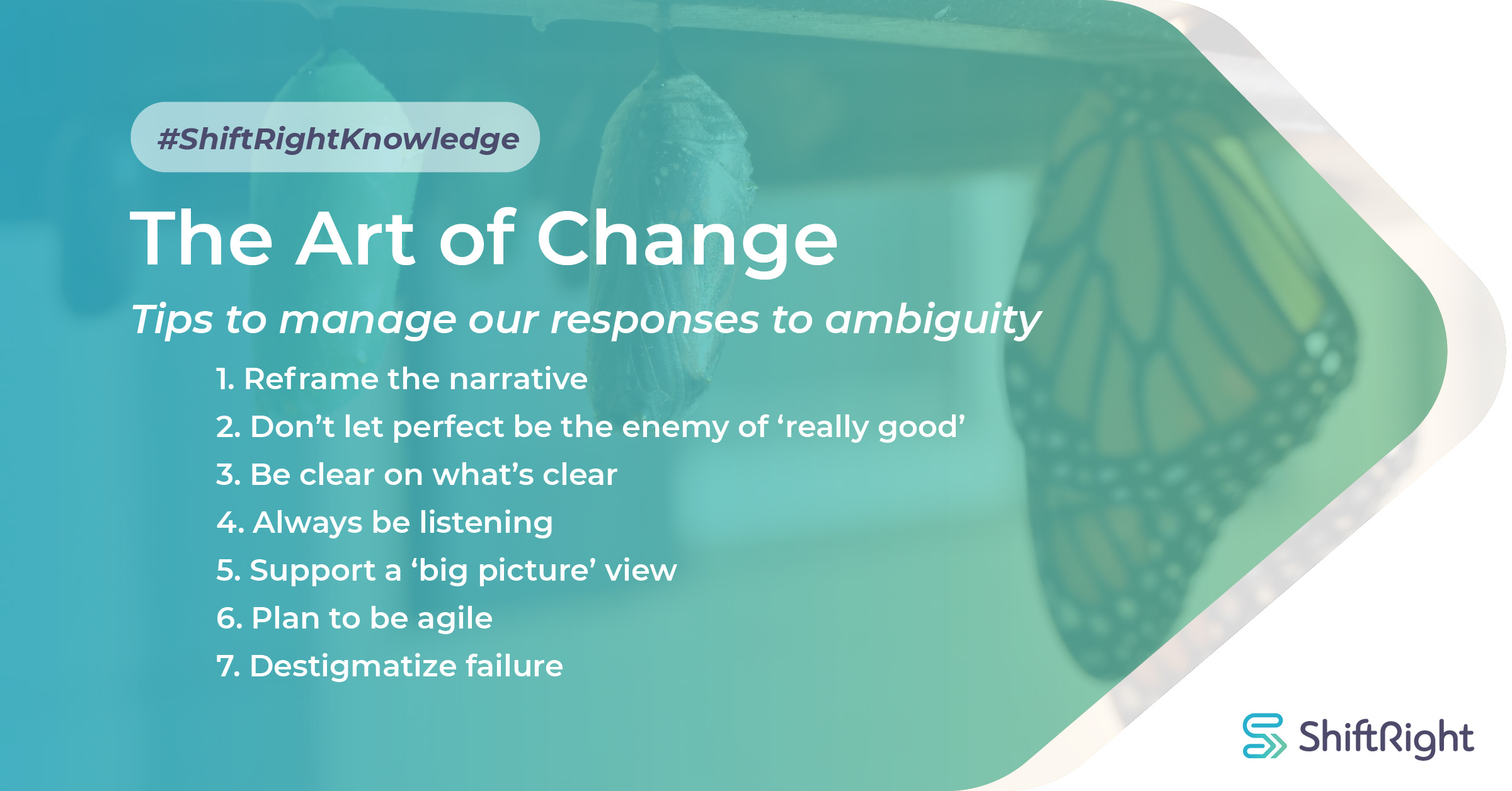Far from being an exclusive prerequisite for the c-suite, dealing with ambiguity is fast becoming a necessity for all levels within an organization.
Operating with limited data, adapting to change, leading in an uncertain market has become a common place reality. With the onset of the pandemic, the ability to lead with confidence and role-model the behaviours required for success is an unavoidable necessity.
As leaders and entrepreneurs, we must recognize the differing responses our teams, peers and clients have to ambiguity.
Generally, ambiguity can be perceived in three primary ways:
- A positive opportunity to capitalize on new ways of working or address market gaps
- A negative outcome that breeds uncertainty and fear
- An indifferent circumstance seen as neither good nor bad
So how can we help our teams, peers and clients navigate uncharted territory?
Consider the following tips:
Reframe the narrative – refocus perceptions of uncertainty from a lens of ambiguity into opportunity.
Don’t let perfect be the enemy of ‘really good’ – acknowledge the ‘unknowns’ & encourage a ‘test and learn’ approach. Reward calculated risk-taking.
Be clear on what’s clear – overemphasize what you do know, what is not changing and what will continue to operate as normal.
Always be listening – leverage existing data points through active listening. Identify and understand the opportunities and challenges of the differing levels of your management team, peers, clients and end-customers.
Support a ‘big picture’ view – Tell the end-to-end story, emphasize the big picture of the changes you are making and why, rather than a reactionary view.
Plan to be Agile – Respond to the needs of customers and end users nimbly and iteratively. Rethink your relationship with your customers and end users and where possible evolve them in co-creating end-solutions that resonate.
Destigmatize the concept of ‘failure’ – in order to encourage innovation in both thinking and design we must rethink the concept of ‘failure’. Attempts at innovation must be rewarded and recognized as an important step to the path of mastery.
We all internalize our reactions to change differently and when operating in a market that has dramatically shifted it is important to be cognizant of differing reactions.
Have you had to develop your ‘ambiguity muscle’ by leaning into uncertain scenarios?


9 thoughts on “The Art of Change: Understanding & Managing our responses to ambiguity”
I think this web site holds some real superb information for everyone 😀
I was studying some of your content on this internet site and I conceive this website is real informative!
It is actually a great and helpful piece of information. I am happy that you shared this useful information with us.
Great delivery. Great arguments. Keep up the great effort.
There is definitely a lot to find out about this subject. I really like all the points you have made.
Some genuinely quality content on this web site saved to bookmarks.
Muchos Gracias for your blog. Really thank you! Really Cool.
I conceive you have remarked some very interesting details, thanks for the post.
Im grateful for the blog article. Really thank you! Fantastic.